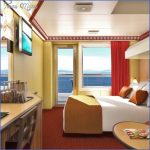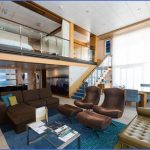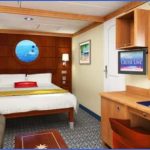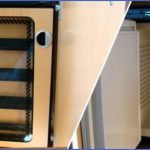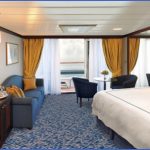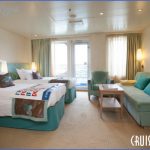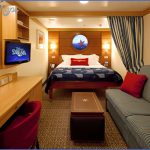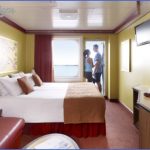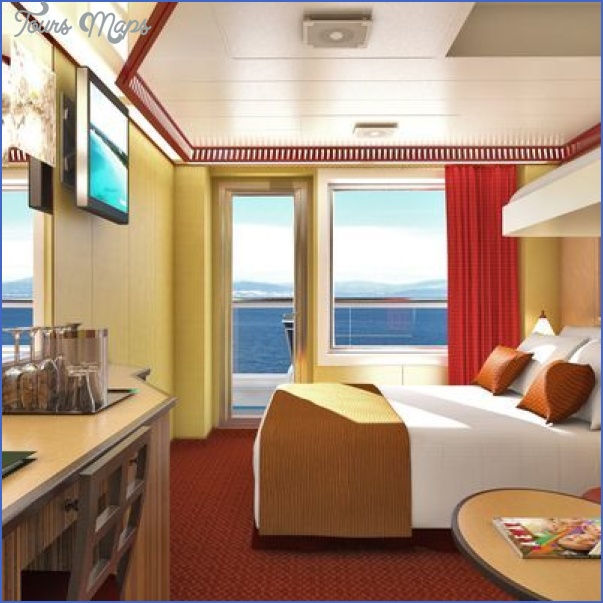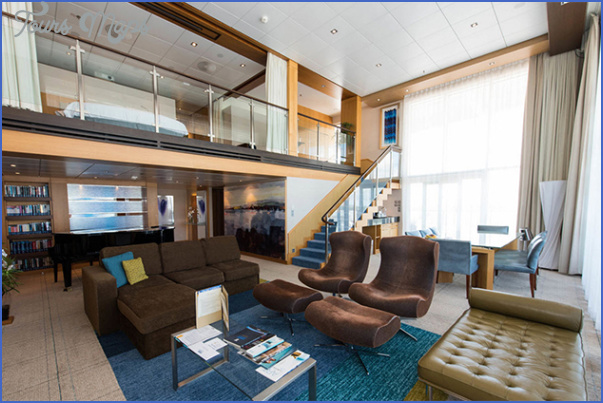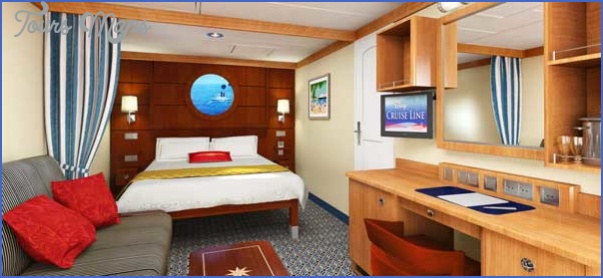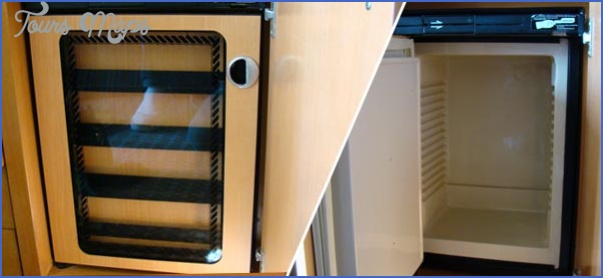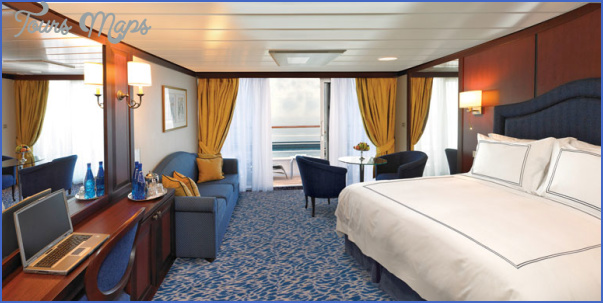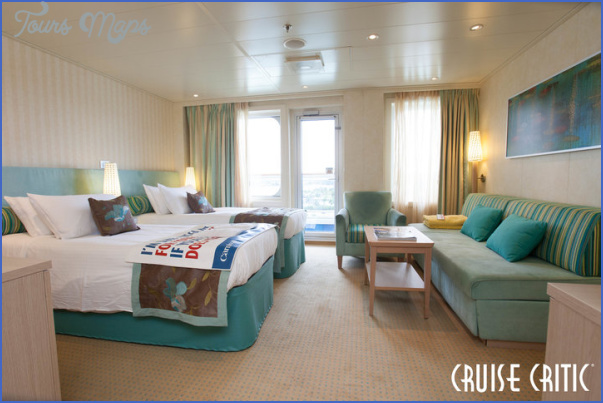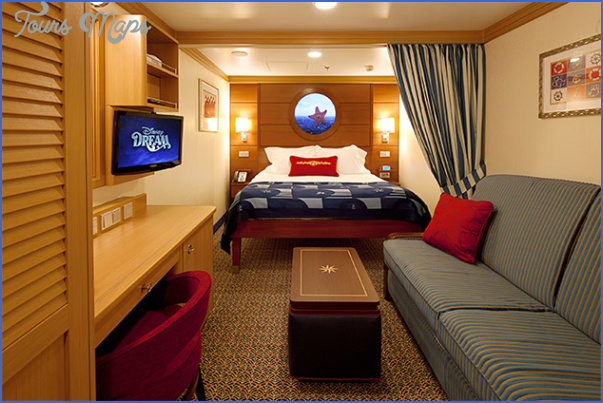Cruise ships are like little cities and as such there are quiet parts of town and loud parts of town. When you’re looking at the deck plan and trying to pick a quiet cabin, consider these spots you may want to avoid:
Near Elevators Just as this is a problem in hotels, it is also an issue on ships. Elevators may ping, or have a voice that tells you the deck level something that can keep you from getting a good night’s sleep. In addition, these tend to be areas that cruisers congregate in, so there may be conversational noise as well. Newer ships, though, have employed designs that separate out elevator lobbies which works to eliminate this excess noise.
Below the Pool Deck Ironically, the pool deck is at its most loud at times when passengers aren’t using it. At the end of each day, the crew stacks up the deck chairs and hoses down the deck for the night. In the morning, they unstack everything and set up the chairs. Neither action is particularly quiet.
Above or Below a Dance Floor or Concert Space Do you see a space that may have speakers and a DJ above or below a cabin space? Then you really don’t want that cabin unless you’re likely to be the last one dancing on the ship every single night.
Near Service Areas The doors to crew quarters open and slam a hundred times a day, as people go on and off shift, bring out room service deliveries, and roll out carts to refill mini bars and clean up staterooms. In addition to the sounds of doors slamming and carts rolling and attendants talking, you may also be near an entrance with an ice machine. Service areas are sometimes, but not always, shown on deck plans; a knowledgeable travel agent will be able to help you avoid them.
Above Any Machinery A good rule of thumb is to assume that staterooms that are near the water line at the extreme forward and aft ends of the ship will be within range of the anchors, bow thrusters, stern thrusters, or tender shell doors (mechanical platforms that can open to facilitate tendering operations). The sounds made by these pieces of equipment don’t last long, but they can be very loud. We once never set an alarm on a cruise aboard Grandeur of the Seas because our extreme-forward stateroom rattled with the sound of the anchor chain each time we docked, waking us up. And if your stateroom is positioned near the ship’s lifeboats drills and tendering operations might mean being awoken by the sound of the hydraulics firing up, though this is only likely to happen sporadically throughout the voyage.
Please note that noise issues, in general, are more of a problem on older cruise vessels, thanks to poor insulation and public venues clustered uncomfortably close to the ships’ accommodations.
On the big ships, deluxe outside cabins may also come with verandas (also known as balconies), giving you a private outdoor space to enjoy the sea breezes. But remember that the verandas vary in size, so if you’re looking to do more than stand on your balcony, make sure the space is big enough to accommodate deck chairs, a table, or whatever else you require. Also keep in mind that these verandas are not completely isolated your neighbors may be able to see you and vice versa. With few exceptions, veranda cabins will not have obstructed views. It’s also worth reiterating that most cruise lines have completely banned smoking on stateroom balconies, so if you’re thinking of booking one with the intention of lighting up, you might end up disappointed and penalties for doing so against the rules are stiff.
These basic categories inside, outside, balcony and suite are then divided even further into subcategories that each carry a different price. Let’s look at the Carnival Breeze to get some idea of the many categories of cabins one ship can hold. It has seven different sub-categories of just the basic balcony stateroom: categories 8A, 8B, 8C, 8D, 8E, 8F, and 8G. What differentiates these seven categories is their physical location on the ship. The lower the letter, the less the price but the location may not be as desirable; higher categories are typically placed near the center of the ship, while lower categories like 8G might be positioned at the extreme front or back of a deck (not ideal; see box above). When prices are listed on the cruise line’s website or in print advertisements, these are almost always lead-in prices for lower-category staterooms. Expect the price to rise, sometimes significantly, if you absolutely have to have that midships, Category 8A balcony stateroom. It’s also good to be flexible: That Category 8G stateroom might be near the front of the ship, but it could also save you hundreds of dollars.
Carnival Breeze also has cove, or sheltered balconies, on her lower deck below the lifeboats. Known as Category 7C, these staterooms are desirable for their location closer to the water, but they tend to be sheltered by the lifeboats above them and feature steel, rather than clear Plexiglas, balcony railings.
HOW TO CHOOSE A quiet Cruise CABIN Photo Gallery
Maybe You Like Them Too
- STAR CLIPPERS CRUISES TRAVEL GUIDE
- JAMAICA CRUISES
- TRAVEL TO CABO SAN LUCAS CRUISES
- NORWEGIAN CRUISE LINE CRUISES TRAVEL GUIDE
- Passports & Identification FOR CRUISE TRAVEL

